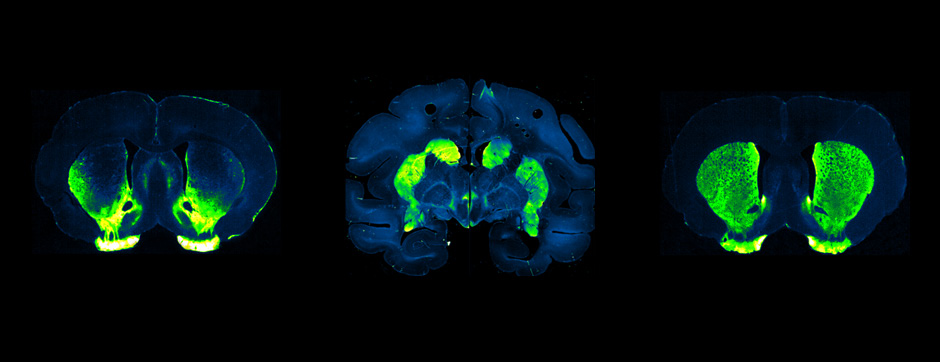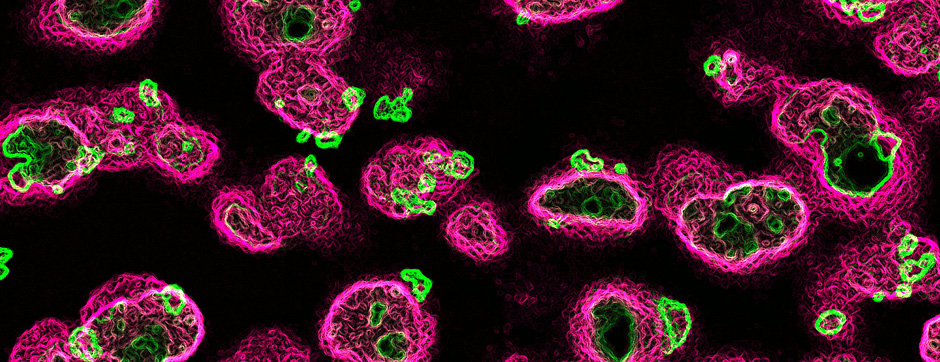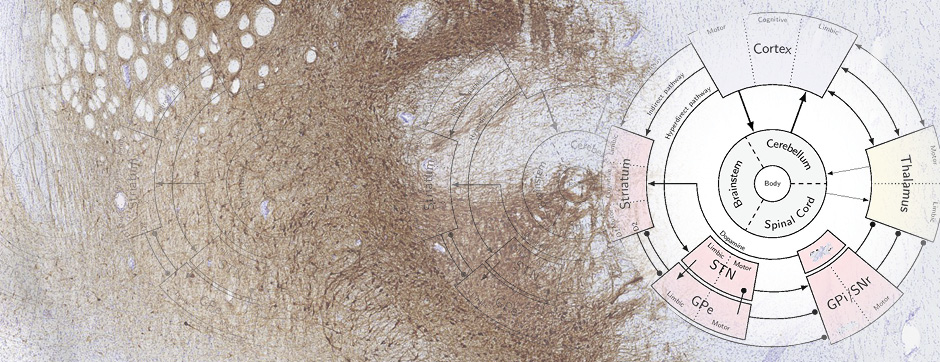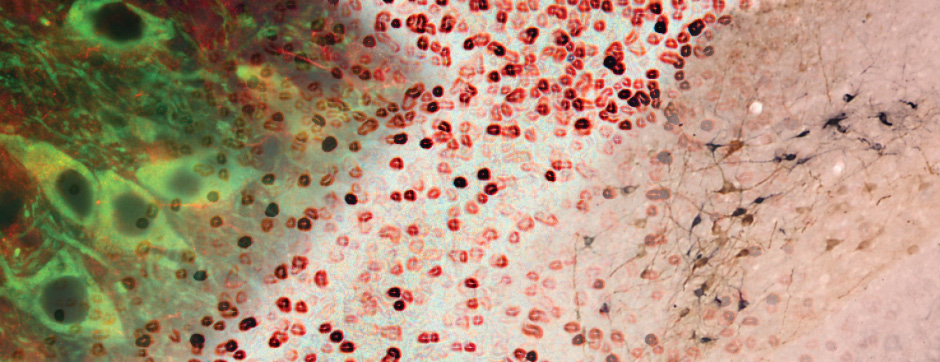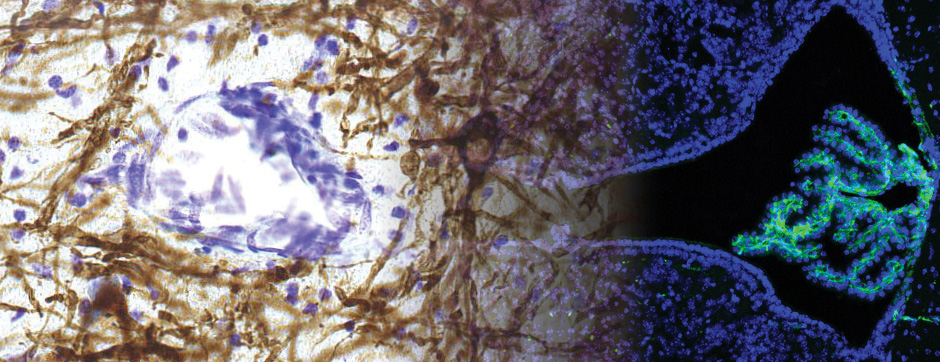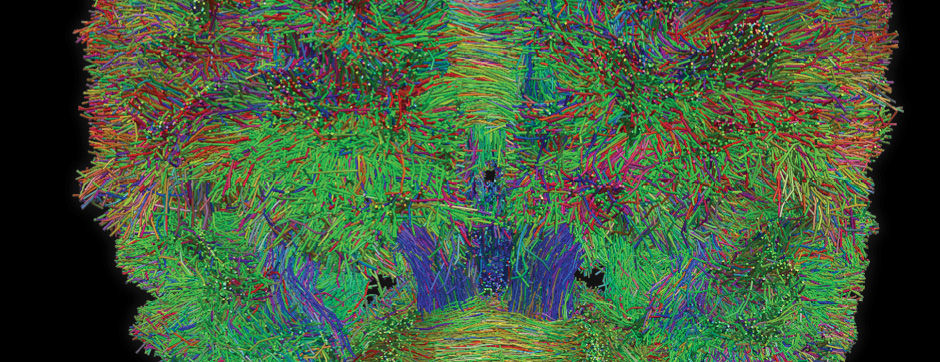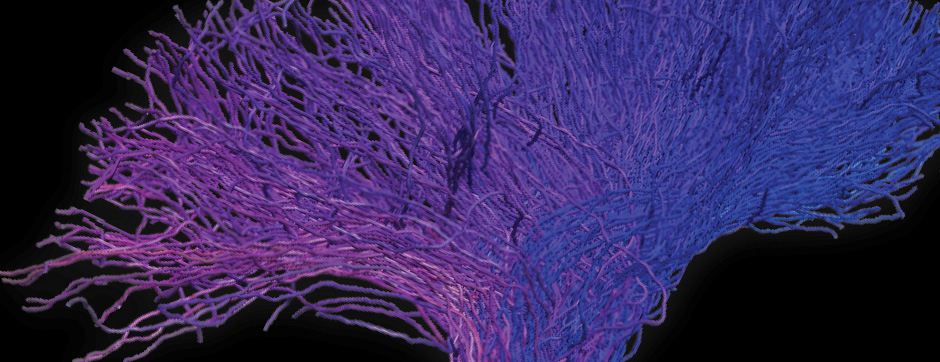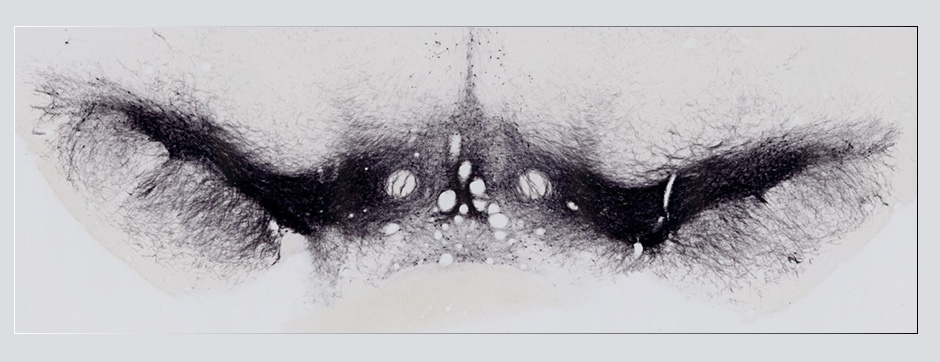
Louis-Philippe BERNIER
Functional regulation of P2X receptor channels by phosphoinositides
juillet 2012 Directeur(s) de thèse : Philippe SEGUELA (McGill Canada) et Eric BOUE-GRABOT Résumé de thèseLong after its initial discovery as part of DNA and as the main source of energy in the cell, the nucleotide adenosine-5’-triphosphate (ATP) is now rightfully considered as an important extracellular signalling molecule. It is now known that purinergic transmission plays significant physiological roles, notably in neuro- and gliotransmission, in the modulation of the innate and adaptive immune response, in smooth muscle constriction and in regulating blood clotting. It is also actively involved in the generation and maintenance of various pathological states, including chronic neuropathic and inflammatory pain.
How purinergic signalling can be implicated in such a diverse array of mechanisms via only one signalling molecule comes from the variety of receptors that are activated by ATP. Two major types of ATP-sensitive receptors exist: the P2X ionotropic receptor channels and the metabotropic P2Y receptors. The P2X family of ATP-gated ion channels is composed of seven subunits that assemble as trimers to form receptors with various functional and pharmacological profiles. Like all ion channels, the activity of P2X receptor channels is tightly regulated by orthosteric and allosteric regulation mechanisms. This thesis provides evidence of a novel type of post-translational regulation mechanism where the levels of intracellular phosphoinositides (PIPn) modulate the channel activity of P2X receptors.
The first article included in my thesis focuses on the P2X1 subtype, which is mainly involved in smooth muscle constriction in blood vessels and vas deferens, as well as in the control of platelet aggregation and blood clotting. We demonstrate that the activity of the P2X1 receptor channel is positively regulated by membrane PI(4,5)P2 (PIP2). Depleting the intracellular levels of PIP2 decreased the ATP-activated current carried through the P2X1 channel and had an inhibitory effect on ATP-mediated mesenteric artery constriction, a P2X1-dependent process. Direct binding between the P2X1 cytosolic tail and PIP2 is shown to be necessary for the full expression of P2X1 activity.
The next article in this thesis describes the PIPn-dependent regulation of the P2X4 receptor channel, which is highly involved in the generation of neuropathic and inflammatory pain through its expression in spinal cord microglia. Results obtained show that complete P2X4 function is dependent on the levels of PIP2 and PI(3,4,5)P3 (PIP3). Both species of phospholipids potentiate the P2X4-mediated ionic current and calcium entry by directly binding to the C-terminal domain of P2X4 subunits. Activation of co-expressed microglial metabotropic receptors can trigger changes in PIP2 or PIP3 levels, which could affect the contribution of P2X4 in pain-inducing mechanisms.
In the third report, we investigate the molecular characteristics of the interaction between membrane PIPn and the various P2X receptors that were shown to be directly modulated by the phospholipids. By analyzing the functional and PIPn-binding effects of various mutations performed on the C-terminal domain of the PIPn-sensitive P2X1, P2X4 and P2X7 subtypes as well as on the PIPn-insensitive P2X5 subtype, we identify the PIPn-binding regulatory motif of P2X receptors.
The last article included in this thesis examines the dynamic changes in channel permeability brought by sustained activation of the microglial P2X4 receptor. We show that upon sustained ATP application, P2X4 channels form large conductance pores allowing the flux of large organic molecules. The large pore formation of co-expressed microglial P2X7 receptors has been extensively studied; we show here that P2X4-mediated permeation is mechanistically distinct and, in contrast with P2X7, does not induce membrane blebbing or cell death. Furthermore, we demonstrate that membrane PIPn potentiate the formation of this high-conductance P2X4 pore, suggesting that this property can be regulated by metabotropic changes in PIPn levels.


